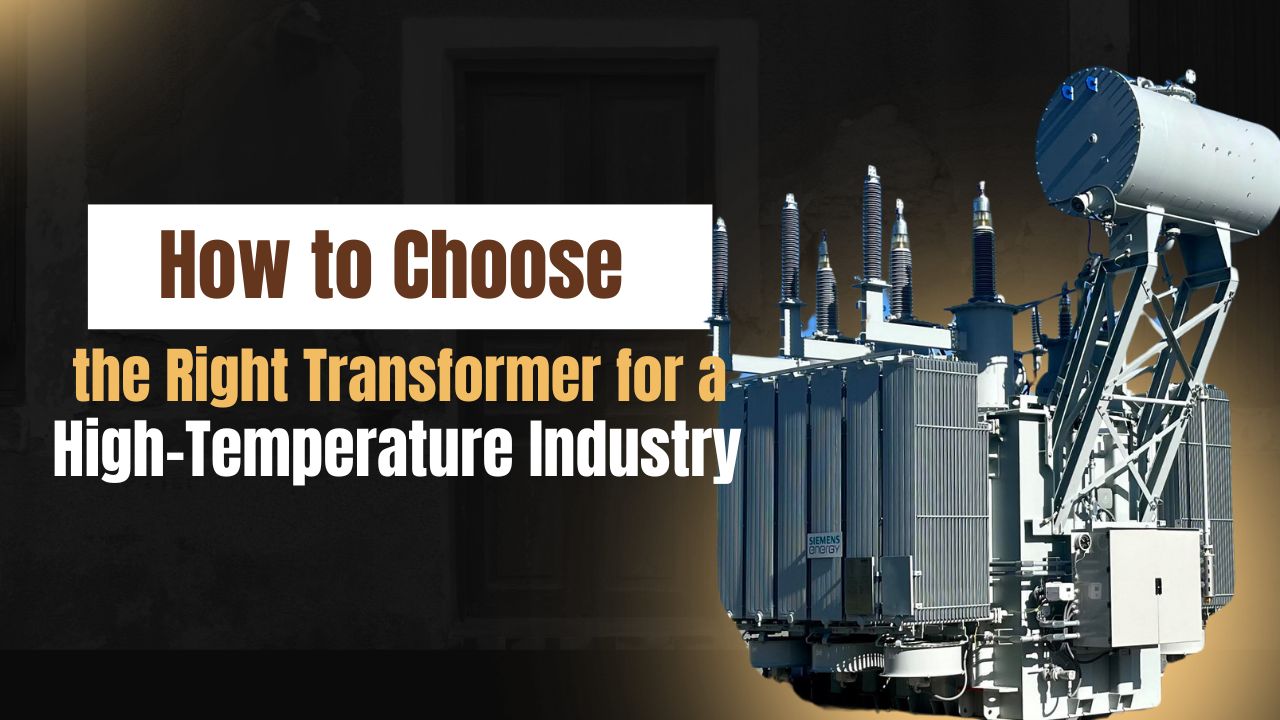

High temperatures change the rules. Standard transformers might pass tests in normal conditions, but that says little about how they’ll behave near furnaces, molten metals, or continuous heat-generating loads.
This is where premature failures often start—through slow insulation fatigue, oil degradation, and mounting core losses.
If you’re working in an environment where 60°C ambient readings feel routine, choosing the right transformer becomes less about nameplate ratings and more about thermal behavior.
Here’s how to look at it with that lens.
Everything starts with where the transformer will sit.
An indoor panel room with poor ventilation can feel hotter than an outdoor yard exposed to the sun. A steel plant near ladles behaves differently than a ceramics line.
What you need is a clear profile of the highest ambient temperature your transformer will be exposed to during operations.
Once you have that, calculate the required insulation class and temperature rise limits.
Many high-heat environments benefit from Class H insulation, but even then, design choices around clearances and cooling paths play a role. Choosing Class H without modifying those factors limits the benefit.
Thermal buildup can derail even a well-rated transformer. A design with forced air cooling or an oil circulation loop changes the operating curve.
Not every setup needs that level of sophistication, but if the load has high current density or frequent peaks, it’s worth considering.
We’ve seen teams struggle with hotspots even in low-load conditions, only to later discover poor cooling duct geometry or placement next to other heat-generating equipment.
Space layout and air movement patterns around the transformer are just as important as what’s inside it.
The way a transformer handles heat depends heavily on its core and coil structure. CRGO steel with low-loss characteristics helps reduce internal heating.
On the winding side, the spacing between conductors and the type of insulation used determine how easily the heat escapes.
Layer winding arrangements often trap more heat compared to disc winding. Some designs use horizontal and vertical cooling ducts inside the coil structure itself, giving the oil more paths to carry heat away.
These small design elements matter more when ambient temperatures leave no margin for error.
The right insulating oil supports thermal exchange, resists oxidation, and holds its dielectric strength under stress.
In high-heat zones, this choice becomes more than maintenance convenience—it’s directly tied to lifespan.
We’ve worked with teams that chose high-grade mineral oils with low viscosity, only to replace them later with silicone-based options after early signs of degradation.
Some setups benefit from synthetic esters, especially if the transformer sits close to flame or needs fire-resistant properties. Choose oil that matches both your temperature profile and load duty.
Not every industrial process runs steady loads. Induction furnaces, rolling mills, and arc melting setups shift power levels in seconds.
These fluctuations change how heat builds up inside the transformer, and how quickly it recovers.
Designing for peak load alone leaves you blind to what happens between cycles.
If the transformer faces ramping currents or steep start-stop patterns, look for designs with high short-circuit strength, mechanical rigidity, and stronger insulation bracing. These details protect you during load shifts, not just during steady operation.
Once installed, real heat behavior rarely matches what the drawings predict. That’s why building room for diagnostics is just as important.
Temperature sensors, oil monitoring ports, and access for IR scanning help you track performance as it evolves.
At Makpower, when we design transformers for high-heat environments, we include features like reinforced tap leads, easy-access testing points, and sensor-ready fittings.
These details help you monitor performance over time and catch load-related heat issues before they cause lasting damage.
The transformer you choose will either adapt to heat—or struggle with it quietly until failure.
Environments with consistent high temperatures need more than just a higher insulation rating. They need smarter cooling paths, better oil selection, and a design that matches how heat flows and builds during real loads.
That’s how we approach every high-temperature transformer we build at Makpower.
As trusted transformers manufacturers, we understand the critical role design and durability play in extreme industrial settings.
Whether it's for steel, glass, or smelting plants, our goal remains simple: give you a transformer that runs as steady on day 900 as it did on day one.